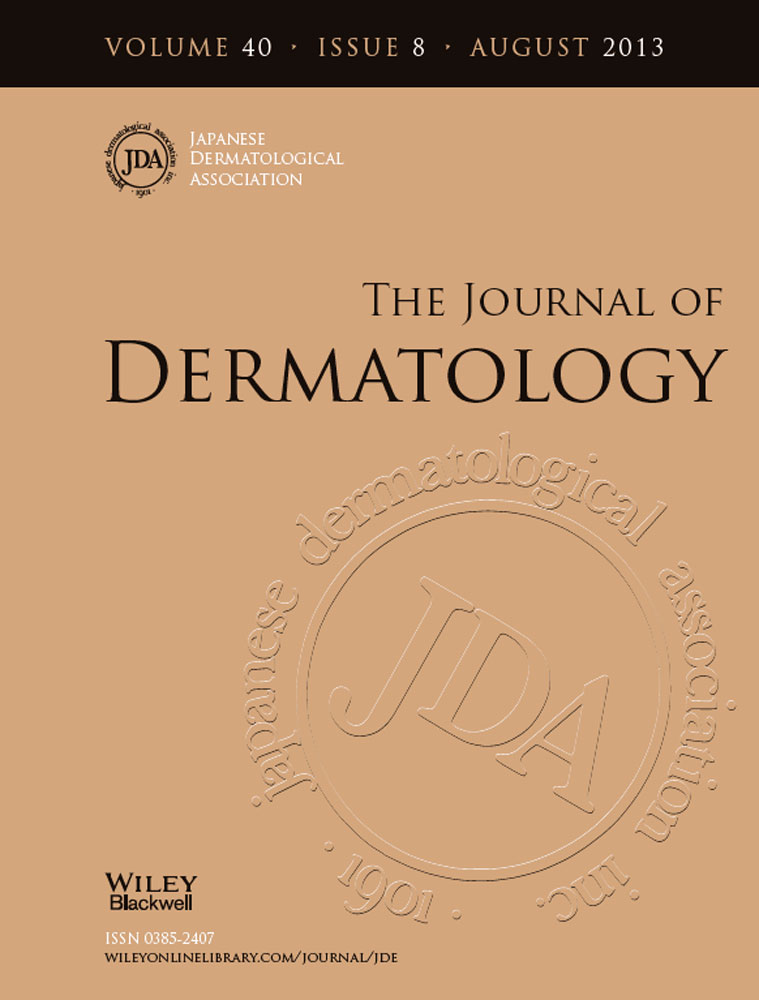Dermatological side-effects of telaprevir-based triple therapy for chronic hepatitis C in phase III trials in Japan
Abstract
Telaprevir-based triple therapy is highly effective for chronic hepatitis C. However, concern has been expressed over the high frequency and severity of its dermatological side-effects compared with those associated with peginterferon (PEG-IFN) and ribavirin (RBV) therapy. Thus, here, we evaluated the dermatological adverse reactions of telaprevir-based triple therapy in Japanese multicenter phase III clinical trials in an attempt to characterize the dermatological side-effects and establish appropriate management plans. In these trials, 126 treatment-naïve patients and 141 treatment-failure patients were administrated telaprevir, PEG-IFN-α-2b and RBV for 12 weeks followed by PEG-IFN-α-2b and RBV for another 12 weeks (T12/PR24 group), and 63 treatment-naïve patients were administrated PEG-IFN-α-2b and RBV for 48 weeks (PR48 group). Dermatological adverse reactions developed in over 80% patients in both groups, and most of them were grade 1 or 2. In the T12/PR24 group, there were more grade 2 or grade 3 events, and the time to onset was earlier than that in the PR48 group. Most reactions could be managed with topical corticosteroids and oral antihistamines, and the rates of discontinuation due to dermatological reactions were not high even in the T12/PR24 group. In the T12/PR24 group, however, two cases of Stevens–Johnson syndrome and one case of drug rash with eosinophilia and systemic symptoms, which corresponds to drug-induced hypersensitivity syndrome in Japan, were reported. For appropriate treatments of individual dermatological adverse reactions, the judgment of discontinuation of antiviral drugs and treatment based on the severity are extremely important in this triple therapy.




